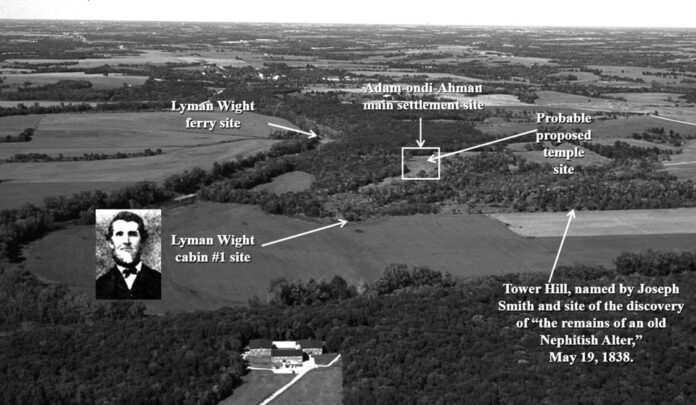
Born: 9 May 1796, Fairfield, New York
Quorum of the Twelve Apostles: 8 April 1841 (age 44)
Excommunicated: 3 December 1848
Died: 31 March 1858 (age 63), Dexter, Texas
“You will take Joseph Smith and the other prisoners into the public square of Far West, and shoot them at 9 o’clock to-morrow morning.” [1] Among the prisoners receiving this illegal sentence on 1 November 1838 was Lyman Wight, known by friend and foe alike as the “Wild Ram of the Mountains.” [2] Lyman was born in Fairfield, New York, during the final year of George Washington’s presidency. [3] He cast his lot with the Church in Kirtland only a few months after its organization. A year later he went as a missionary to Cincinnati, where he baptized nearly one hundred persons, many of whom traveled with him to Jackson County, Missouri. Brother Wight commanded the Saints in their defense against the mobs there, and after the Church was driven from that place, he volunteered to travel five hundred miles to Kirtland to report to Joseph Smith. When Presiding Bishop Edward Partridge asked him if his family’s unsettled condition would allow his going, he replied that “his wife lay by the side of a log in the woods, with a child three days old, and he had three days’ provisions on hand; so he thought he could go very well.” [4] His visit with the Prophet Joseph Smith resulted in the formation of Zion’s Camp, which he helped recruit. As a colonel in the Missouri Militia, Elder Wight was both respected and feared by many persecutors of the Saints…
Let my servant Lyman Wight beware, for Satan desireth to sift him as chaff” (D&C 52:12). In 1845 he led a small group of dissident members to Texas, where they settled in various locations. At a general conference in 1848, the “Wild Ram of the Mountains,” Lyman Wight, was excommunicated-
Tower Hill- Just SE of Adam-Ondi-Ahman
“[Regarding “Tower Hill” north of Far West, Missouri] We pursued our source up the river, mostly through timber, for about eighteen miles, when we arrived at Colonel Lyman Wight’s home. He lives at the foot of Tower Hill (a name I gave the place in consequence of the remains of an old Nephite altar or tower that stood there), where we camped for the Sabbath.

George W. Robinson, a scribe of Joseph Smith who was with him at the time, writes: “We next kept [traveling] up the river mostly in the timber for ten miles, until we came to Colonel Lyman Wright’s who lives at the foot of Tower Hill. A name appropriated by President Smith in consequence of the remains of an old Nephitish Altar and Tower where we camped for the Sabbath. (Scott H. Faulring ed., An American Prophet’s Record: The Diaries and Journals of Joseph Smith, SLC: Signature Books, 1989, p. 184.) 1838 Joseph Smith, Jr. History of the Church of Jesus Christ of Latter-day Saints, 3:34-35 Quoted in Step by Step through the Book of Mormon by Alan C. Miner
“Tower Hill, the was named by the prophet Joseph Smith when he was in the are staying with Lyman Wight. The prophet saw the hill and went to the top of the hill and found a pile of rocks. Joseph Smith said this pile of rocks were once an alter it looked as though it said “in consequence of the remains of an old Nephitish altar and Tower”.
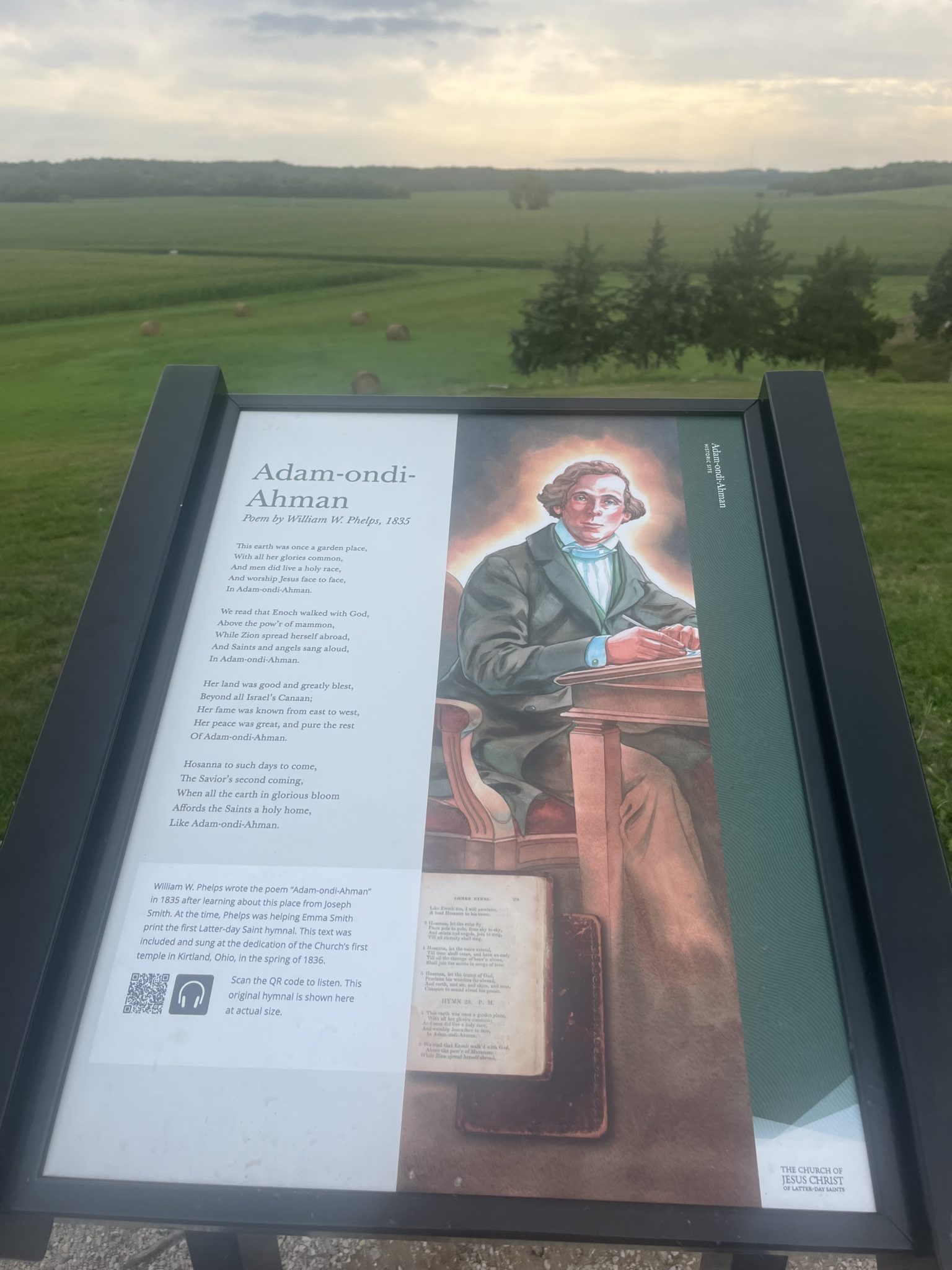 Recordings say “Nephitish Altar or Tower” was on the “highest point of the bluff” “at the point of the hill that formed a curvature” and “on a high mountain”.
Recordings say “Nephitish Altar or Tower” was on the “highest point of the bluff” “at the point of the hill that formed a curvature” and “on a high mountain”.
When the tower was first located by the Prophet Joseph Smith, it was composed of a loose pile of rocks on and in a mound of mixed dirt and rocks. The mound was about 36 feet in diameter and about 36 inches higher than the surrounding ground level. Some of the rocks appeared reddish as a result of burning and were scattered sometime in piles about two feet deep on top of the mound. The Saints also “supposed there had been an ancient city of the Niphites”.
There are two accounts one by Oliver B. Huntington and one by Orange Wight of Diahman, that specify that the Tower was separate from the “Alter Site“, but other than those two accounts no one else recorded that the Altar of Adam was different than that pile of stones. So, in addition to that pile of rocks being a Niphitish Altar or burial mound it is the site of Adams Altar. It was built after Adam was cast from the Garden of Eden.
B.H. Roberts said this about this altar:
“It was at this altar, according to the testimony of Joseph Smith, that the patriarchs associated with Adam and his company, assembled to worship their God. Here their evening and morning prayer ascended to heaven with the smoke of the burning sacrifice, prophetic and symbolic of the greater sacrifice yet to be, and here angels instructed them in heavenly truths.” https://fheontheroad.com/what-to-know-when-visiting-adam-ondi-ahman-missouri-lds-sites/
Quotes from Alexander Baugh
“While at the base of a large hill near Lyman Wight’s cabin, George W. Robinson recorded that they discovered “the remains of an old Nephitish Alter.” To commemorate the discovery, Joseph Smith called the place Tower Hill…
Brigham Young University conducted excavation work at the Mormon historical site of Adam-ondi-Ahman near Jameson, MO, during the summer of 1979. University personnel including archeologists, historians and graduate students spent over 8 weeks conducting a historical survey and minor excavations.
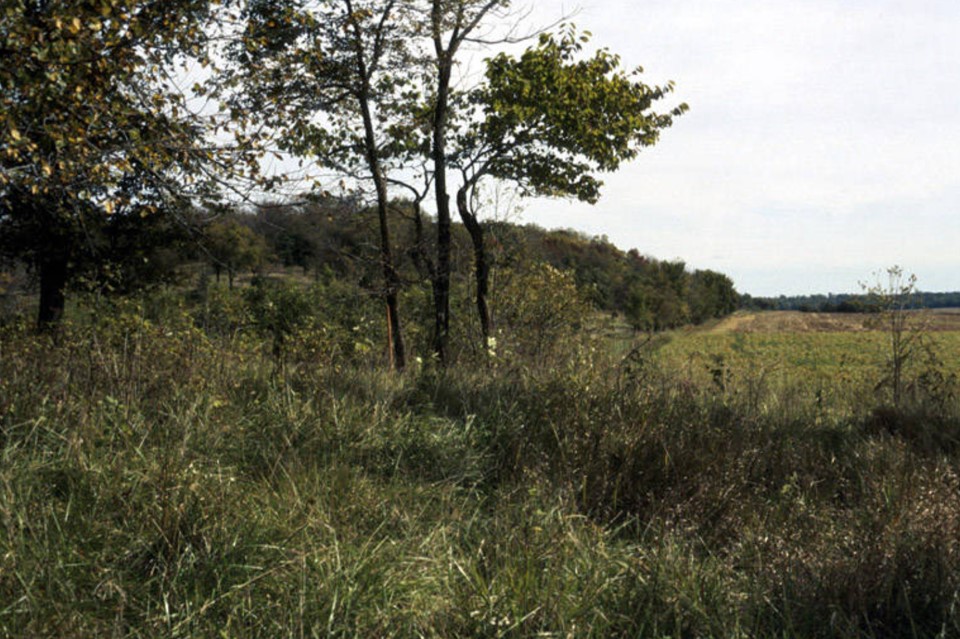
“We plan to take an inventory of what remains of historical importance at 18 separate sites across the country,” said Dr. Ray Matheny of BYU’s Department of Anthropology. “In Missouri this includes Adam-ondi-Ahman as well as Far West near Kingston and Haun’s Mill near Breckenridge.
“We will try to correlate archeological work with historical references to determine the physical location of the town that developed at Adam-ondi-Ahman later known as Cravensville.
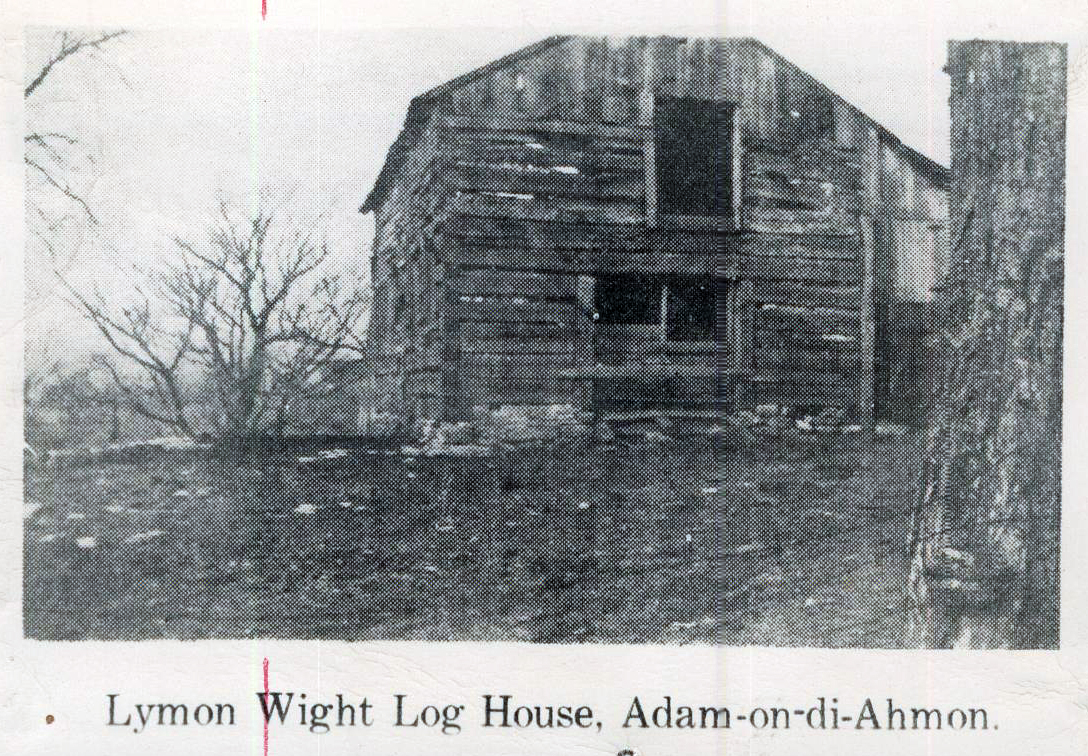
This log building stood at Adam-ondi-Ahman from 1830-40. The site was the home of the Mormons, and a spot adjacent to the building was said to be Adam’s grave. This photo courtesy of T.C. Barlow, Jameson.
“There were some 200 cabins here in 1838, and we’re using electronic equipment to map cultural features,” Matheny said. “This information will be put in archives and also will be used to plan the financing of major excavations should the work be continued.”
Infrared photography as well as an electrical resistance machine capable of charting anomalies at a depth of 18 feet were also in use.
A cartography who uses microwave and infrared power transmitting equipment to manipulate data through computers, produces results which either can be used for 3-dimensional mapping or color mapping showing only the information desired.
The old town site actually lay to the north of the historical marker identifying the Mormon shrine, and the grounds are at the crest of a bluff overlooking the Grand River. Most of the work was done at the site of the old Lyman Wight cabin, erected in 1837. Historically, Wight bought the land off a man named Black.

This sketch depicts the log cabin of pioneer Lyman Wight once standing at the foot of Tower Hill at Adam-ondi-Ahman near Jameson, MO, in the valley of the Grand River in Daviess County.
Lyman Wight was the only Mormon living here when Joseph Smith Jr. and his followers sought sanctuary from troubles with anti-Mormons at Independence, MO. Wight later moved on with the Mormons after violence erupted between the Mormons and the anti-Mormons, but his cabin was in use for approximately 100 years.
“We’ve come across some fine artifacts even though our excavations have been relatively minor,” said Dr. Methany. “We have square nails and recently uncovered an 1859 penny among other items. Oddly enough, privies are the main places we like to find. The Mormons often rock lined beneath their privies, helping to contain broken dishes and other discarded items.”
The work thus far has turned up three cabin sites and depressions believed to be old wells in the bottom ground northwest of Tower Hill.
While part of the group remains on the site, others scour local records for historical information. Dr. Lamar Berrett of BYU is the overall director of the 10-member university venture.
Dr. Leland Gentry, who holds a doctorate in history and philosophy of religion, is visiting with local historians seeing legitimate information about Adam-ondi-Ahman.
“In talking with various local people during the past weeks, we’ve come to realize that many people have misconceptions about the historical significance of Adam-ondi-Ahman and the role it plays in the Mormon faith,” said Gentry.
“There are only two things about Adam-ondi-Ahman that are significant as it relates to the Mormon faith. First, Mormons believe that three years before Adam’s death, he gathered his posterity, which numbered in the thousands, at the valley of the Grand River in order to give his blessing and, second, Adam will return at a future time and that various keys of authority will be delivered up to Adam to be delivered to Jesus Christ,” Gentry explained.
He notes that the Mormon Church owns 1,415 acres in Daviess County which is all the church wants in order to preserve the historical significance of the area according to their faith.
— written by Darryl Wilkinson, Gallatin, for the Aug. 17, 1979, edition of the St. Joseph Gazette. Also from the Gallatin North Missourian, Aug. 1, 1979
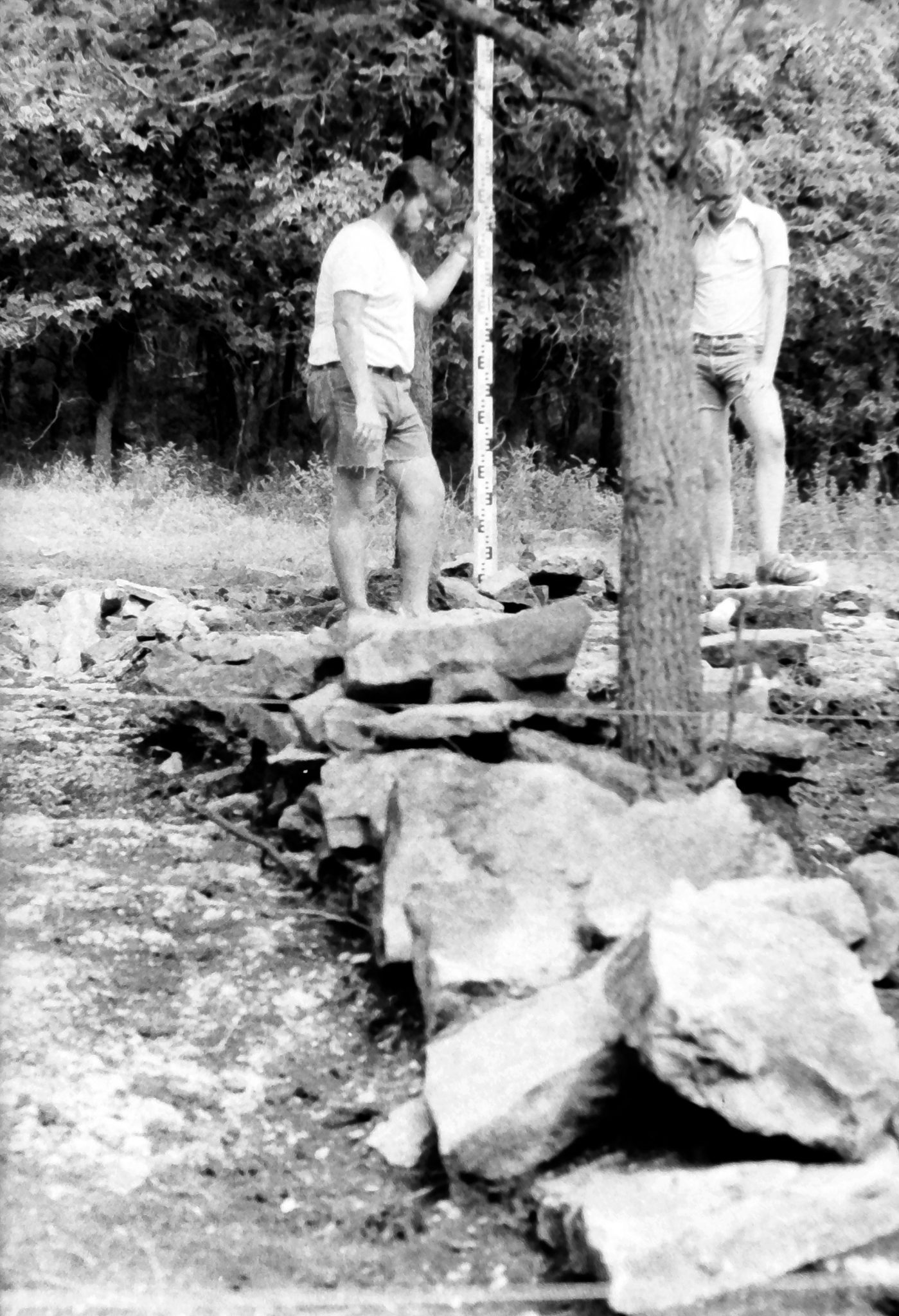 Researchers from Brigham Young University took measurements while surveying the remains of the Lyman Wight log cabin site at Adam-ondi-Ahman near Jameson, MO. University personnel including archeologists, historians and graduate students spent over 8 weeks conducting a historical survey and minor excavations during the summer of 1979.
Researchers from Brigham Young University took measurements while surveying the remains of the Lyman Wight log cabin site at Adam-ondi-Ahman near Jameson, MO. University personnel including archeologists, historians and graduate students spent over 8 weeks conducting a historical survey and minor excavations during the summer of 1979.
More about Lyman Wight in the blog below

